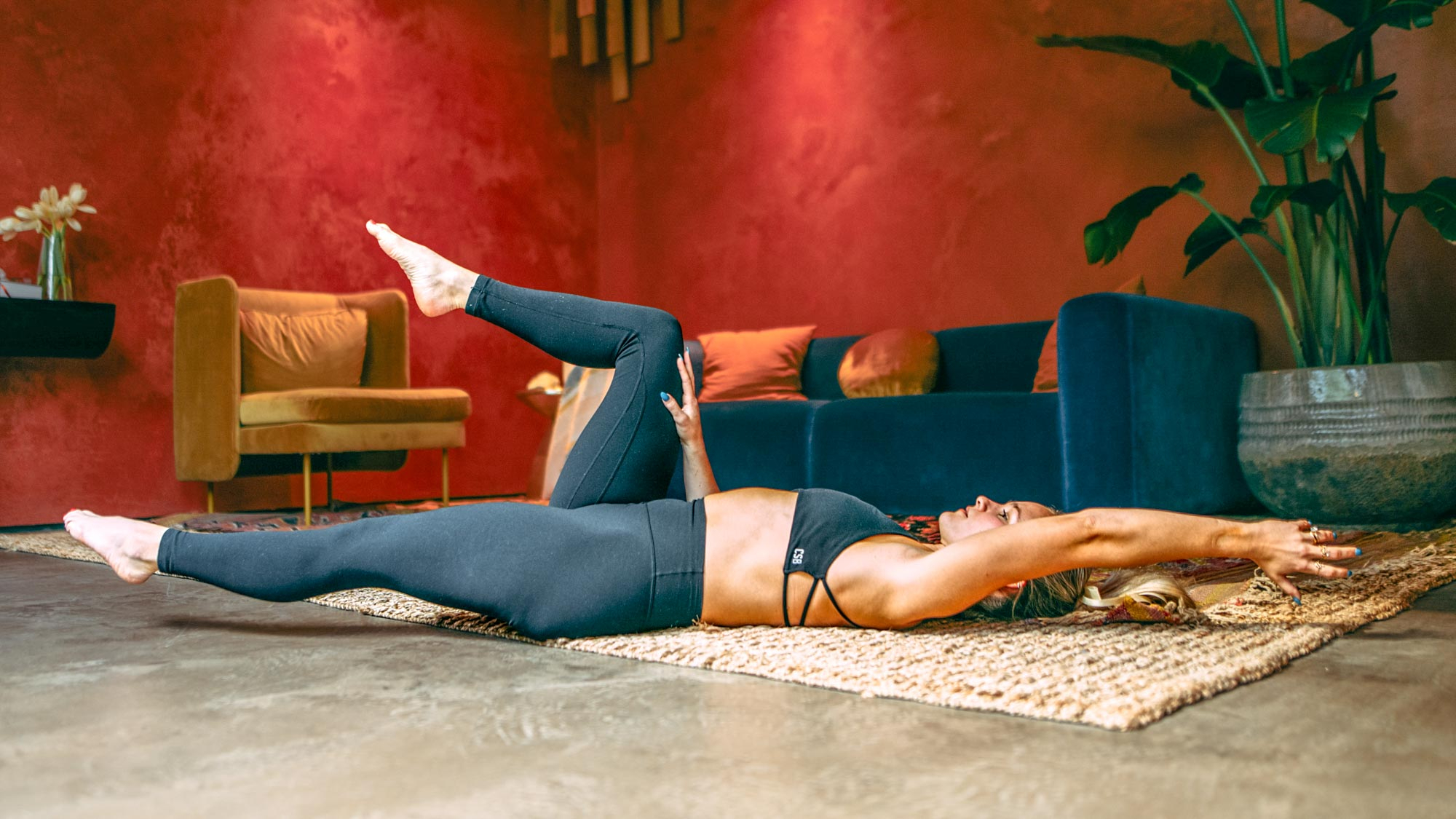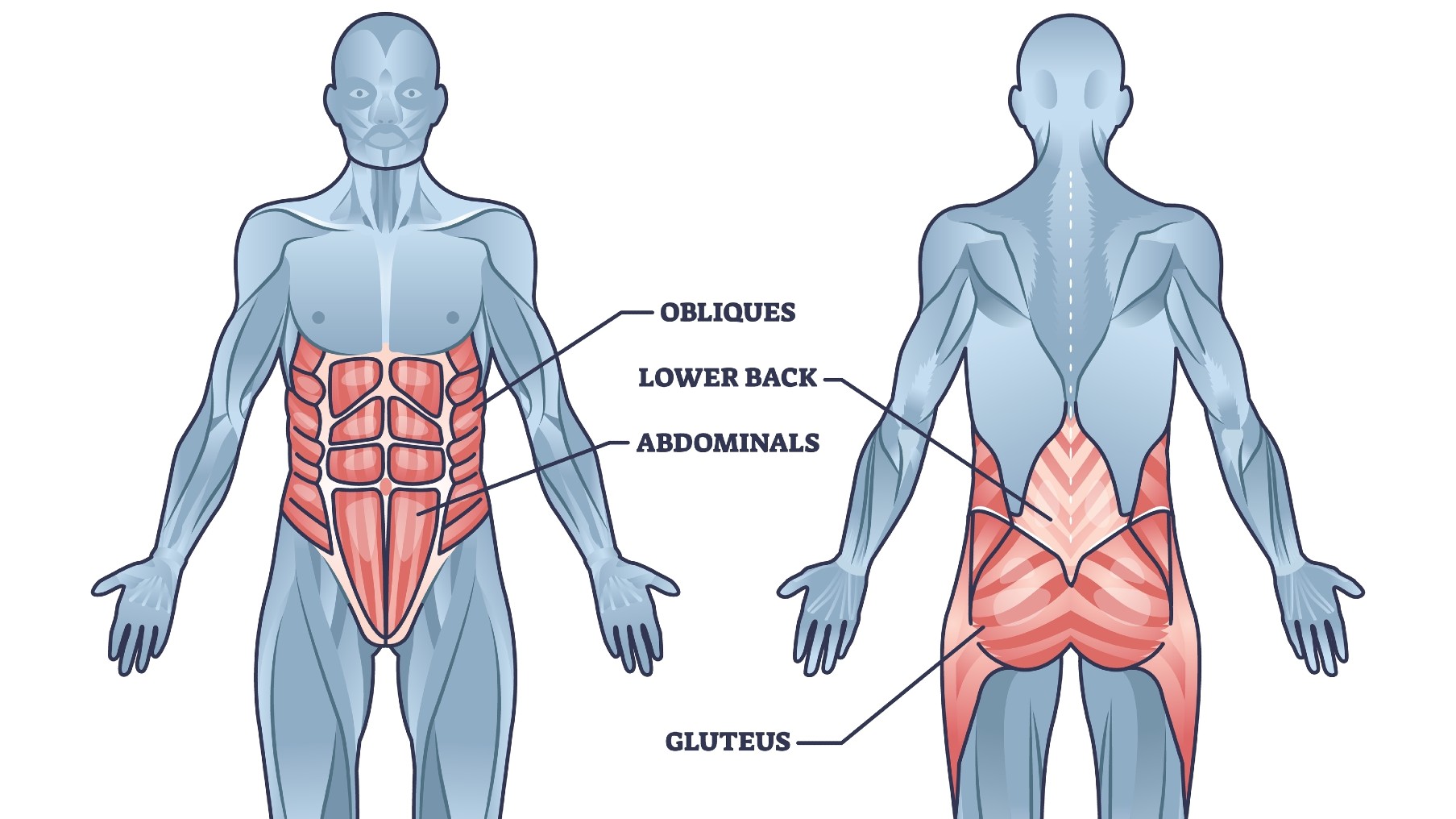
Building a strong core can be done in various ways, so having an arsenal of core exercises to fall back on means you’ll never get bored of your routine.
Whether mixing compound with isolation exercises, lifting heavy weights, trying bodyweight workouts, or adding dedicated abs workouts to your strength training, you can build these powerhouse muscles by recruiting them often and in varied ways.
One bodyweight abs exercise I like to jazz up is the deadbug — it’s accessible for beginners and builds your core without putting pressure on your back. Deadbugs get the name because of the position of your body — you’ll lay on your back with your arms and legs in the air, then extend one arm and the opposite leg together, alternating between sides.
Below, I explain how to do the banded deadbug exercise, including a step-by-step guide and the benefits of deadbugs, specifically, this deadbug variation.
What is a banded deadbug?
Deadbugs are a stabilization exercise, recruiting the deepest core muscles, including the erector spinae (spinal stabilizers) and transverse abdominis, making it one of the best abdominal exercises for beginners learning to activate the core muscles.
The banded deadbug involves holding an anchored resistance band overhead with both hands, which keeps isometric contraction through the upper body as you pull against it without moving. From here, you can perform the deadbug using your legs and maintaining tension in your arms, shoulders, chest and back.
Although you’ll use your hip flexors, legs and arms to help drive movement, the main focus is your core muscles. And despite the deadbug remaining an effective ab exercise through the years, you’ll need to program alongside your other training for the best results. As you get stronger, deadbug variations like banded deadbugs can help challenge your core and make the exercise harder.
How to do banded deadbugs
I recommend a set of the best resistance bands for home workouts — you can use a band with or without handles and stack them if you need extra resistance. Anchor your band overhead using a door jamb or wrap the bands to a squat rack, or similar, then set yourself up on an exercise mat.
Struggle to coordinate your left and right sides? Give this a shot.
How:
- Lay on your back with your resistance band anchored above and behind your head — positioning it higher may feel more challenging than lower
- Grip your band and pull the band toward you until your arms are extended into the air over your chest. Keep tension in the band without moving
- Bend your legs to 90 degrees and lift them into the air
- Brace your core and slightly tuck your pelvis to flatten your back
- If you want to generate more tension in your stomach, lift your upper back and shoulders away from the floor
- With control, extend your left leg until roughly an inch away from the ground, then return to the starting position. Repeat with your right leg. You could also extend and re-bend both legs together
- Try 3-4 sets of 8-12 reps per side.
Brace your core throughout and keep your back flat on the mat to avoid placing undue pressure on the lower back or hip flexor muscles. I love that the exercise combines isometric and isotonic contractions, meaning you’ll hold tension in your upper body without moving (isometric) while moving your legs (isotonic).
What is the most effective core exercise?

Sadly, there’s no such thing. Think of your core as a whole complex unit of muscles that wrap, extend and expand around your body, helping you generate movement safely while stabilizing your spine. Essentially, these muscles are the glue holding things together.
To target them effectively, add functional movement into your routine (think pushing, pulling, squatting, climbing) alongside core strengthening exercises that zone into the muscles that make up your core.
“Healthy” core muscles mean a taller posture, better balance and protection for your spine. For many, the deadbug exercise remains low impact for lower back pain, but for anyone with an injury, always check with your personal trainer or a qualified professional first. We’ve rustled up some routines below to help you work these muscle groups more efficiently.







